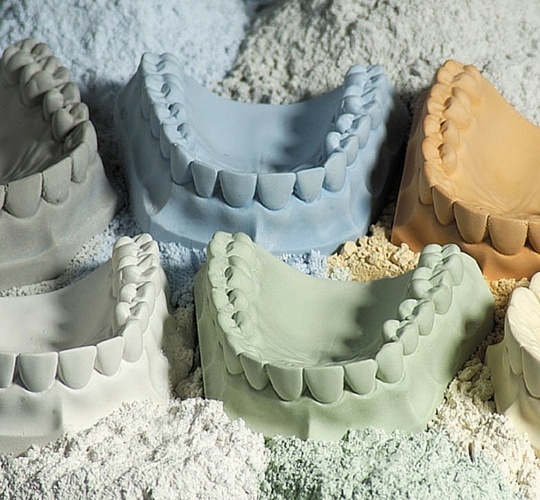Sometimes choosing what type of gypsum materials to use, given the many choices on the market, can be difficult. Usually the broad division in choice is should I use plaster or stone and what are the differences?
While both are essentially CaSO4.2H2O (Calcium Sulfate Dihydrate) or raw gypsum, through the process of crushing and heating we get CaSO4.1/2H2O (Calcium Sulfate Hemihydrate) dental stone and plaster. With some of the water driven off, the dental stone is ready to receive the correct ratio of water for use with gypsum products in dentistry, such as models and mounting of cases. When choosing stone or plaster it is important to know the unique properties of both.
Plaster is a less refined material and is distinguished microscopically by irregular shaped crystals. Plasters typically have higher water powder ratios of 40-50 milliliters per 100 grams of powder. They are relatively soft and are a great choice for rudimentary procedures where extended durability of the application is not a requirement. Models that are for one-time use, or for quick diagnosis, would be an instance where plaster has sufficient durability. Plaster can also be used for mounting, providing it has an expansion of .10% or lower. Mainly this material is used in applications where after fabrication, the case will be dismounted or disposed of and no mounting record is needed.
Dental stone is a more refined gypsum and is characterized by regularly shaped crystals. Typically the water powder ratios for dental stone are 35 milliliters or below, per 100 grams of powder. These more accurate and predictable dental stones are harder and more suitable for procedures like crown and bridge, implants and orthodontic appliances. Lower expansion versions are also great for mounting. Especially for cases that need to be kept long term and not discarded after fabrication.









Leave a comment